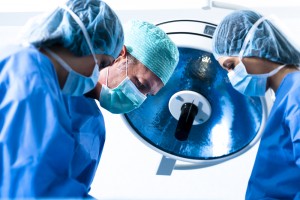 According to the results of a recent study, titled “The impact of robotic surgery on the surgical management of prostate cancer in the USA” published in the BJU International journal, the last decade saw an increase in robot-assisted radical prostatectomy (RARP) to handle a large number of radical prostatectomy (RP) cases, subsequently increasing the economic burden for prostate cancer surgery.
According to the results of a recent study, titled “The impact of robotic surgery on the surgical management of prostate cancer in the USA” published in the BJU International journal, the last decade saw an increase in robot-assisted radical prostatectomy (RARP) to handle a large number of radical prostatectomy (RP) cases, subsequently increasing the economic burden for prostate cancer surgery.
In order to understand the surgical characteristics associated with RARP use and assess its impact on practice patterns and cost, the research team designed a retrospective cohort study that included 489,369 men who underwent non-RARP or RARP in the USA from 2003 to 2010.
First author Steven L. Chang, MD, of Harvard Medical School in Boston, and colleagues found that RARP adoption increased from 0.7% to 42% of surgeons who perform RP. Until 2007, RARP was widely used among surgeons at teaching hospitals and after 2007 it became widely used at urban hospitals.
Moreover, from 2003 to 2010 the total number of surgeons preforming RP decreased but the number of surgeries preformed rose from 10 to 45%.
At the end of the study, 73% of surgeons who preformed more than 24 annual RP’s had adopted RARP, when compared to 36% of surgeons who preformed 5 annual RP’s.
The team also found that using RARP was associated with an increase in costs, contributing to the 40% increase in annual prostate cancer surgery expenses. Moreover, RARP costs decreased plateauing at over $10 000, while non-RARP costs increased to nearly $9000 by the end of the study.
“Given its high costs, RARP adoption seems contradictory to contemporary effects for cost containment. We suspect that RARP diffusion has remained robust due to an absence of pressures to curtail adoption. Because RARP adoption was typically associated with increased RP volume, we suspect that there may be provider-induced demand for RARP given the potential financial rewards.Therefore, all key components in the decision for the type of prostate cancer surgery actively led to widespread RARP adoption in the USA despite the consequence of increasing the economic burden of prostate cancer surgery,” the researchers concluded in their study.

